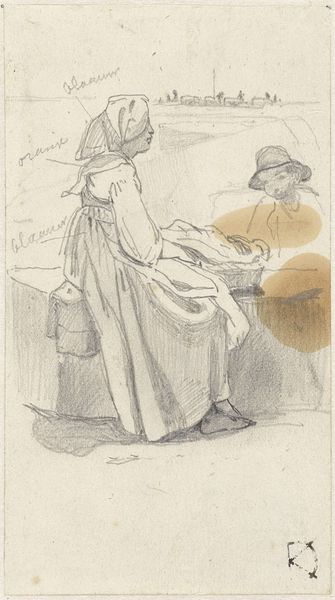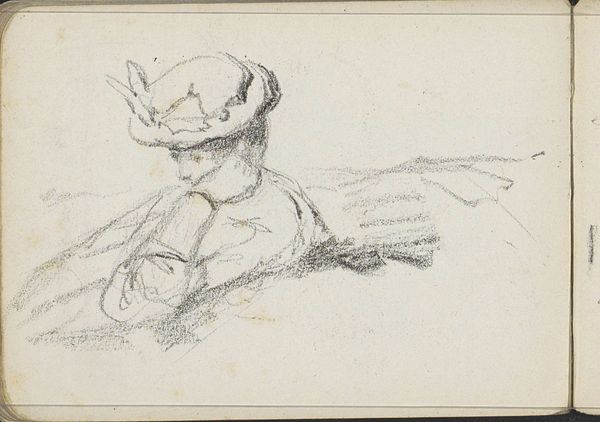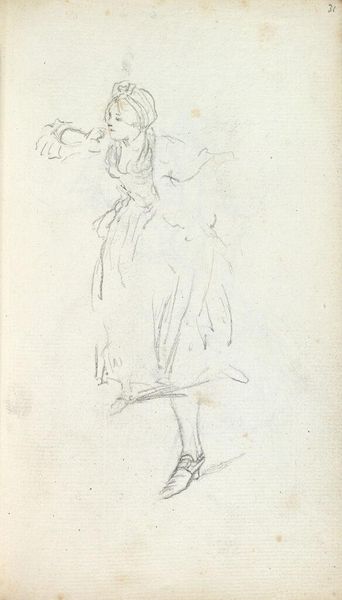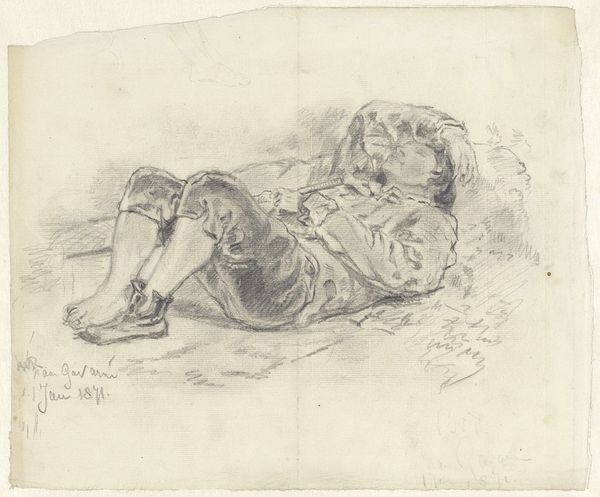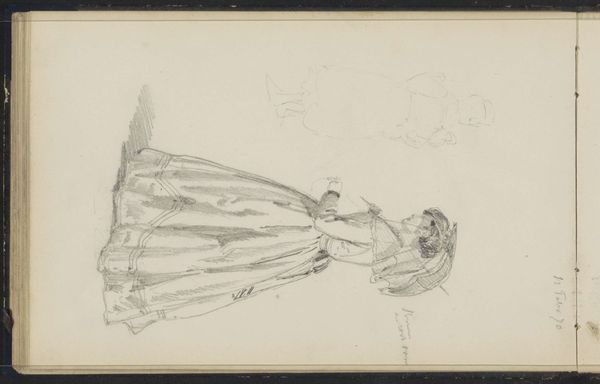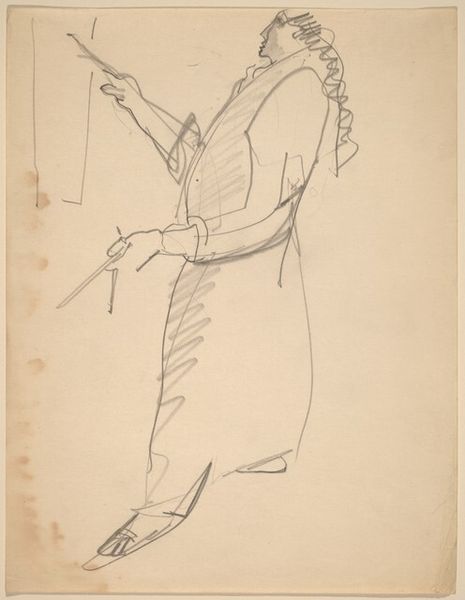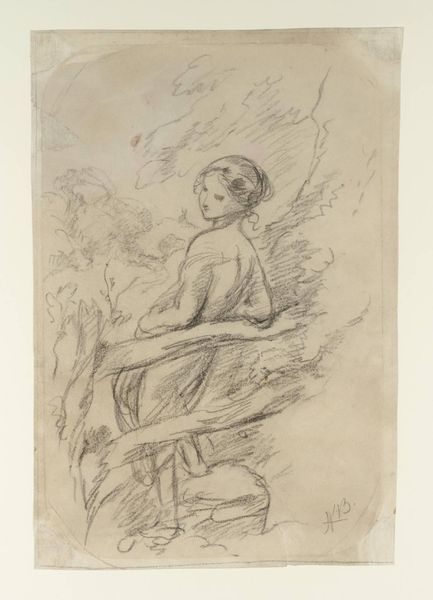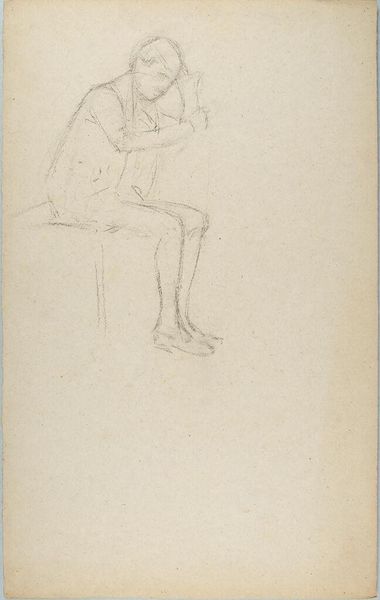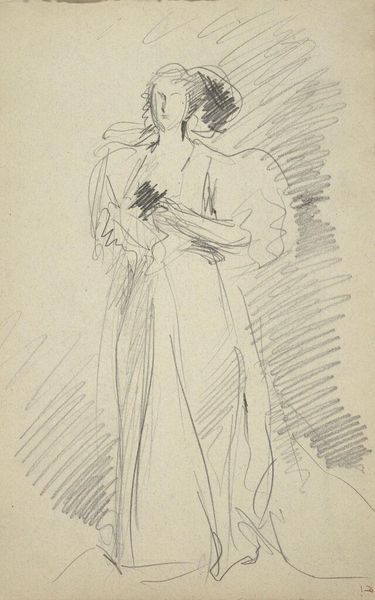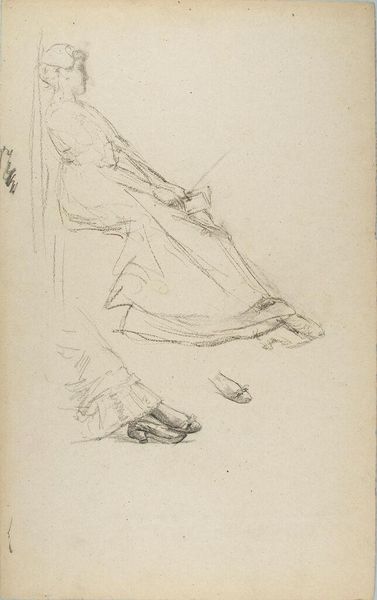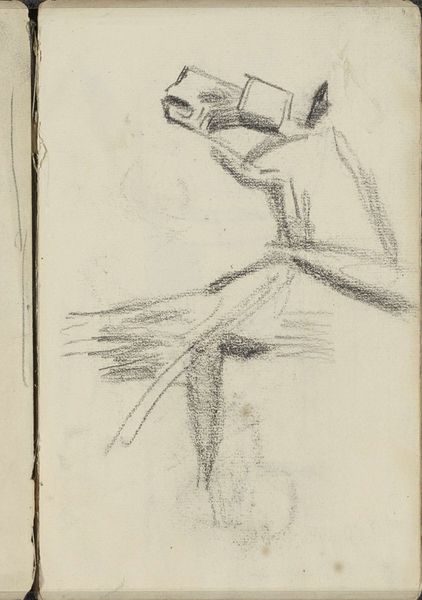
drawing, pencil
#
drawing
#
impressionism
#
pencil
#
orientalism
Dimensions: height 208 mm, width 134 mm
Copyright: Rijks Museum: Open Domain
Editor: This is George Hendrik Breitner’s “Man in oosterse kleding bij een balustrade”, or “Man in Oriental Clothing by a Balustrade,” a pencil drawing dating from around 1871 to 1876. The quick, almost hurried, strokes give the piece a feeling of being captured on the go. I'm struck by how Breitner uses this sketch to explore an 'Oriental' subject. What are your thoughts on Breitner's Orientalism here? Curator: Well, let's consider the historical context. The late 19th century saw a surge of Orientalism in European art, often reflecting colonial power dynamics and fantasies about the 'exotic' East. This sketch is from that era. To understand Breitner's intention, we must examine his place in this movement. Is he genuinely trying to understand a different culture, or is he projecting existing stereotypes? Does he challenge or reinforce these stereotypes through the portrayal of this man and his clothing? Editor: I see your point. The man is positioned away from the viewer; his face is mostly obscured, which feels less like a portrait and more like an appropriation of an 'Oriental' figure for the artist’s own purposes. Does that potentially change our reading of the artwork? Curator: Absolutely. It makes us consider the power dynamics inherent in representation. Breitner, a Western artist, is choosing to depict an individual from a different cultural background. The drawing's ambiguity, especially the obscured face, becomes significant. Is this intentional? Is Breitner interested in the individual, or is he merely using him as a stand-in for a generalized 'Orient'? Editor: I guess it pushes us to consider how this image may be feeding a very specific cultural hunger back in Europe, consciously or not. The lack of detailed features perhaps even plays into stereotypes by creating a sense of ‘otherness’. Curator: Precisely. And this, in turn, influences the reception of the art, both then and now. Thinking critically about Orientalism compels us to recognize that what we see might not always reflect an objective reality, but rather a specific socio-political lens. Editor: This discussion really shifted my initial understanding! It is interesting to delve into the cultural weight art carries.
Comments
No comments
Be the first to comment and join the conversation on the ultimate creative platform.
